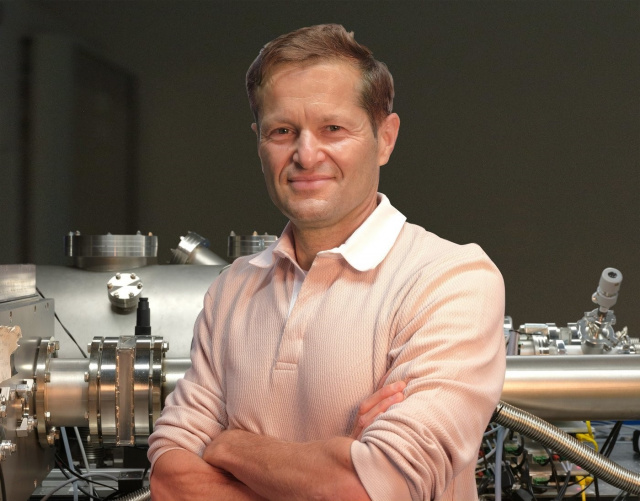Ferenc Krausz is a Nobel laureate
The 2023 Nobel Prize in Physics was and awarded jointly to Ferenc Krausz, Pierre Agostini and Anne L'Huillier “for experimental methods that generate attosecond pulses of light for the study of electron dynamics in matter.”
The state changes of electrons, which determine the behaviour and reactions of atoms and molecules, take place at an incredibly high speed, Press releasetypically within a few attoseconds. An attosecond is a billionth of a billionth of a second, so investigations on this time scale understandably required the development of completely new and special measurement methods. All three laureates are pioneers in laser physics, and thanks to their achievements, the physicists have been able to use attosecond light pulses in their measurements, essentially opening a window into the world of electrons.
 Krausz Ferenc Forrás: © MPI for Quantum Optics
Krausz Ferenc Forrás: © MPI for Quantum OpticsFerenc Krausz, a Hungarian physicist born in Mór, obtained a degree in electrical engineering from the Budapest University of Technology and Economics in 1985 as well as a degree in physics from ELTE University’s Faculty of Science. He began his research work at the Institute of Physics of the Budapest University of Technology and Economics under the guidance of József Bakos in the field of laser physics. He obtained his doctorate at the Vienna University of Technology in 1991, where he later worked as an associate professor and then as a professor. In 2003, he was appointed director of the Max Planck Institute for Quantum Optics in Garching, Germany, and since 2004 he has been the head of the Department of Experimental Physics at the Ludwig-Maximilians-Universität in Munich. He has been an external member of the Hungarian Academy of Sciences since 2007.
Already in the early 1990s, he became interested in studying ever smaller dimensions in space and time using ultrashort pulses of light. This was rendered possible by the explosive development of femtosecond laser technology, with Ferenc Krausz playing a leading role in the perfections of this technology in close collaboration with laser physics researchers at the Research Institute for Solid State Physics and Optics (today’s Wigner Institute for Solid State Physics and Optics).
As a result of the research, the world’s first attosecond light pulses were produced and measured by Ferenc Krausz’s group in the early 2000s.
Portrait film on Ferenc Krausz (2011)
This allowed Ferenc Krausz to make the first real-time observations of the movement of electrons on an atomic scale. Since then, the technique he developed has been used in the investigation of the time dependence of many atomic and molecular physical processes, such as photoionization. The results of Ferenc Krausz’s pioneering experimental work are used in several research institutes worldwide, including the ELI-ALPS Research Institute in Szeged.
Ferenc Krausz is the second Hungarian researcher to receive a Nobel Prize this week. On Monday, the 2023 Nobel Prize in Physiology or Medicine went to Katalin Karikó and Drew Weissman jointly, for their biochemistry discoveries that enabled the development of an effective mRNA-based vaccine to combat COVID-19.



